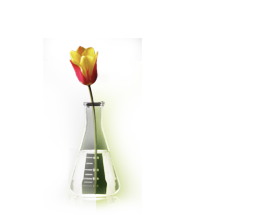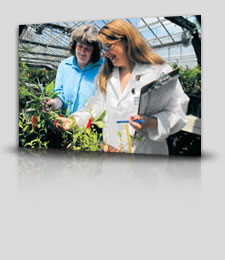


Visitors Welcome
The new Plant Science Center offers plenty of opportunities for public viewing and learning. Visitors can view scientists at work in their labs, interact with hands-on exhibits, visit the new 16,000-square-foot roof garden that will include both display and evaluation gardens, and gain a better understanding of the Garden’s crucial role in plant conservation.
Building Green in the Garden
The Garden demonstrated its commitment to the environment through the construction of the new Plant Science Center. Here’s a look at special “Green” features:
- Designed to earn a gold LEED rating for sustainable design from the U.S. Green Building Council.
- Recycled Materials: 20 percent recycled materials (post-consumer and half from pre-consumer) will be used in the building.
- Energy-Efficient Design: Careful attention was paid to selection of energy-efficient lighting, mechanical equipment, insulation of exterior walls and roof, windows with Low-E and high-performance glass, and air lock vestibules at all entrances.
- Water Efficiency: A rainwater glen will surround the building to naturally pool water to slowly absorb back into the ground and surrounding lakes, preventing runoff. The green roof system holds rainwater to be used later by the plants.
Science Center Snapshot
Groundbreaking:
June 3, 2008.
Grand Opening:
September 21, 2009.
Location:
Southeast border of the Garden, across from the Evaluation Gardens.
Designer/Architect:
Booth Hansen, Chicago.
Designed for LEED certification at the gold level.
Project cost:
$50.9 million, including endowment.
Daniel F. and Ada L. Rice Foundation made a challenge grant of $8 million.
Learn More
Learn more about the new laboratories, classrooms, and facilities by clicking the links below:
The Plant Science Center
Construction Progress
Building Fact Sheet

